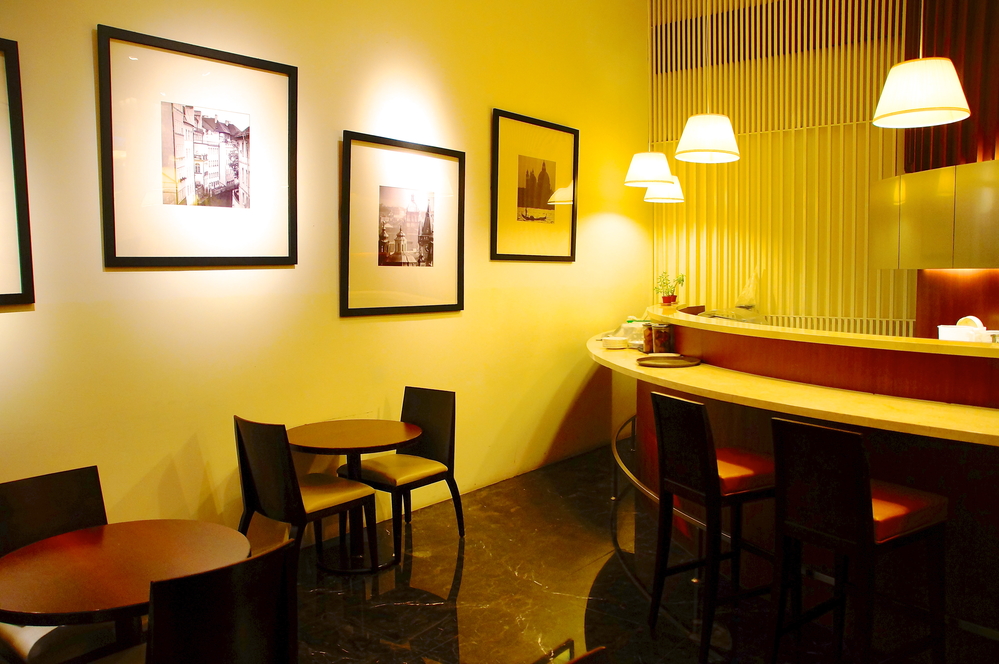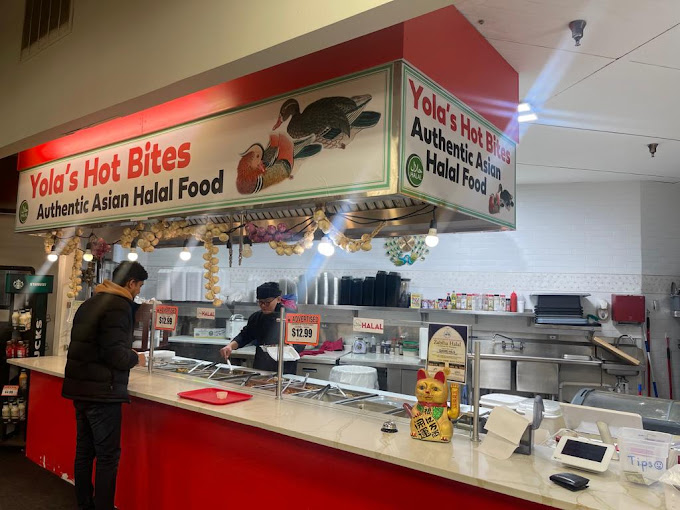Chinese Food Islamabad: Appreciate Authentic Chinese Food at its Best
Chinese Food Islamabad: Appreciate Authentic Chinese Food at its Best
Blog Article
Savor Authentic Oriental Food With a Pan-Asian Spin for a Cooking Adventure
Getting started on a cooking journey via authentic Asian food, improved with a Pan-Asian spin, provides an unique possibility to discover the rich tapestry of flavors that specify the area's diverse cooking customs. This experience invites you to relish the elegant balance of tastes-- sweet, salted, spicy, and sour-- integrated by fragrant herbs and flavors. Think of the cutting-edge blend of Thai curry and ramen or the unexpected pleasure of sushi burritos. As you ponder these enticing recipes, consider the cultural stories and historical impacts that form them, each bite offering a story waiting to be found.

Checking Out Pan-Asian Flavors
In the world of international gastronomy, Pan-Asian food attracts attention for its amazing diversity and the unified interaction of tastes from numerous Asian cultures. This culinary technique celebrates the one-of-a-kind ingredients and rich customs discovered across the continent, producing a tapestry of tastes that is both fascinating and enjoyable. Trick to Pan-Asian food is its capability to balance different flavors-- sweet, salty, spicy, and sour-- while highlighting the quality and quality of each active ingredient.
From the umami-rich soy sauce of Japan to the fiery chili peppers of Thailand, Pan-Asian cuisine provides a substantial combination of tastes. These aspects are typically integrated in innovative ways, boosting recipes with layers of intricacy. As an example, the usage of great smelling natural herbs such as lemongrass and cilantro, typical in Vietnamese and Thai cuisine, includes a refreshing illumination to dishes, while the consolidation of coconut milk delivers a creamy, abundant appearance.
The emphasis on fresh fruit and vegetables and fragrant spices makes sure that each meal is not only a feast for the palate however additionally for the senses. Pan-Asian cuisine invites diners to begin on a cooking trip, discovering the substantial and varied landscapes of Oriental gastronomy with every bite.
Combination Meals to Attempt
While Pan-Asian cuisine is commemorated for its typical flavors, the contemporary culinary landscape is significantly embracing fusion recipes that blend these timeless elements with influences from various other regions. This ingenious method not just honors the abundant heritage of Asian cookeries but additionally presents novel preference experiences that appeal to contemporary tastes buds.
A prime example of such a fusion meal is the Korean-Mexican taco, where seasoned bulgogi beef is wrapped in a cozy tortilla, topped with kimchi and a zesty gochujang-infused salsa. This combination weds the bold, full-flavored flavors of Korea with the vibrant, fresh elements of Mexican cuisine. In a similar way, sushi burritos have gained appeal, integrating the fragile virtuosity of Japanese sushi with the hearty, hand-held convenience of a burrito, typically featuring combination active ingredients like tempura shrimp and avocado with a drizzle of wasabi mayo.
Another significant recipe is Thai curry ramen, which infuses the creamy, aromatic seasonings of Thai curry into the soothing brew of conventional Japanese ramen, producing an unified blend that tantalizes the detects. These fusion recipes extend past simple novelty; they represent a culinary discussion between cultures, motivating expedition and innovation worldwide of Pan-Asian cuisine.
Vital Active Ingredients and Flavors
To truly value Pan-Asian food, one have to understand the essential components and spices that create its structure. This diverse cooking style draws from an abundant tapestry of Eastern traditions, employing an unified blend of flavors and structures. Trick components consist of soy sauce, fish sauce, and oyster sauce, which give a savory umami deepness crucial to Asian recipes. Corresponding to these are rice vinegar and mirin, offering a fragile level of acidity and sweetness.
Aromatic components are pivotal, with lemongrass, garlic, and ginger being common across numerous Pan-Asian recipes. These ingredients provide a great smelling base that improves the complexity of flavors. Seasonings such as star anise, cardamom, and cinnamon present heat and character, echoing influences from areas like China and India.

Food Preparation Strategies and Tips
Mastering the art of Pan-Asian cuisine needs familiarity with its distinctive cooking strategies, each adding to the vibrant tapestry of tastes this cooking custom is commemorated for. Central to these techniques is the stir-fry, a fast food preparation strategy that maintains the nutritional integrity and vibrant shades of ingredients. Making use of a frying pan, the stir-fry method permits for also warmth circulation, necessary for attaining the particular appearance and flavor equilibrium of Pan-Asian meals.
Another essential technique is steaming, site here specifically common in Chinese food. This mild technique preserves the natural flavors and nutrients of ingredients, making it ideal for seafood and veggies. Dumplings, a precious staple, commonly benefit from steaming, resulting in soft, delicious appearances.
Cooking, also essential, passes on smoky midsts to recipes such as Korean bulgogi or Japanese yakitori (asian restaurant isb). This strategy typically involves marinating active ingredients, enabling flavors to penetrate deeply before cooking over an open fire or warmer
Lastly, grasping the art of balancing flavors-- sweet, sour, salty, bitter, and umami-- is essential. Appropriately layering these elements can elevate a meal from common to remarkable, supplying a facility and satisfying cooking experience that embodies the essence of Pan-Asian cuisine.
Eating Experiences Worldwide
Across the world, Pan-Asian cuisine offers an exceptional dining experience, celebrated for its abundant tapestry of tastes and lively discussions. This culinary sensation has transcended cultural boundaries, recording the hearts and tastes of food fanatics worldwide. In multicultural cities like New York, London, and Sydney, Pan-Asian dining establishments work as fusions where culinary traditions from Thailand, Japan, China, and past converge, offering diners with a diverse mix of recipes that highlight the region's variety.
The global charm of Pan-Asian food exists in its ability to provide both credibility and innovation. Chefs masterfully marry conventional components such as lemongrass, soy sauce, and miso with contemporary methods, causing dishes that are both refreshingly brand-new and acquainted. This blend permits diners to start a culinary journey that values heritage while embracing modernity.
Additionally, eating experiences are boosted via attentively made atmospheres that mirror the values of Pan-Asian aesthetics. From minimalist Japanese-inspired interiors to lively Thai-themed rooms, each dining establishment provides a distinct ambiance that matches the cooking offerings. Consequently, patrons are not just eating a meal but partaking in a social experience, making Pan-Asian dining a really worldwide phenomenon.
Final Thought
The expedition of Pan-Asian food provides an extensive understanding of the detailed interaction of tastes and culinary customs throughout Asia. By embracing fusion recipes such as Thai curry ramen and sushi burritos, the culinary trip not just highlights the flexibility of conventional ingredients however also showcases cutting-edge contemporary techniques. This gastronomic journey, improved by important seasonings and cooking methods, gives a distinct chance to appreciate the multiculturalism and culinary virtuosity that define Pan-Asian food on a worldwide scale.
Beginning on a cooking trip with genuine Asian cuisine, boosted with a Pan-Asian spin, uses an one-of-a-kind possibility to check out the abundant tapestry of flavors that define the area's diverse cooking practices.In the realm of global gastronomy, Pan-Asian cuisine stands out for its impressive diversity and the harmonious interaction of tastes from various Asian cultures. Key to Pan-Asian cuisine is its capacity to balance different tastes-- wonderful, salty, spicy, and sour-- while highlighting the quality and high quality of each component.

Report this page